Sexual reproduction is a mode of reproduction that involves the fusion of male and female gametes, resulting in offspring that are genetically different from their parents. It is a more complex process than asexual reproduction and leads to greater genetic diversity in the population. Sexual reproduction is observed in many plants, animals, and even some single-celled organisms.
What is Sexual Reproduction?
Sexual reproduction requires the involvement of two parents, typically one male and one female. Each parent produces gametes (reproductive cells), and the fusion of these gametes during fertilization gives rise to a zygote. The zygote develops into a new individual. In this process, the offspring inherit genetic material from both parents, leading to genetic variation.
Key Features of Sexual Reproduction:
- Involvement of Two Parents: Male and female individuals are typically required to produce gametes (sperm and egg cells).
- Fusion of Gametes: The male and female gametes fuse during fertilization to form a zygote.
- Genetic Variation: Since the offspring inherit genetic material from two different parents, they are genetically distinct from their parents and siblings.
- Slow and Complex Process: Sexual reproduction is generally slower than asexual reproduction and involves several steps, including gamete production, fertilization, and development.
The Importance of Sexual Reproduction
Sexual reproduction plays a crucial role in maintaining genetic diversity within a population. It introduces variation, which is essential for natural selection and evolution. Genetic variation helps populations adapt to changing environments, increasing their chances of survival.
Advantages of Sexual Reproduction:
- Genetic Variation: Sexual reproduction introduces variation, which allows species to adapt to environmental changes. This increases the chances of survival in fluctuating conditions.
- Evolution: Genetic variation is the basis for evolution. Over time, natural selection acts on variations within a population, allowing the fittest individuals to survive and reproduce.
- Better Adaptability: Offspring produced by sexual reproduction are better equipped to handle diseases and environmental challenges because of their diverse genetic makeup.
Disadvantages of Sexual Reproduction:
- Time and Energy Intensive: Sexual reproduction requires finding a mate, which can take time and energy. The process of gamete formation, fertilization, and development is slower compared to asexual reproduction.
- Fewer Offspring in a Given Time: Because sexual reproduction is slower and more complex, fewer offspring are produced in a given time compared to asexual reproduction.
Sexual Reproduction in Plants
In plants, sexual reproduction occurs through the formation of flowers, which contain the reproductive organs. The male reproductive part produces pollen grains (which contain male gametes), and the female reproductive part produces ovules (which contain female gametes). Fertilization occurs when the male and female gametes fuse to form a zygote.
Parts of a Flower:
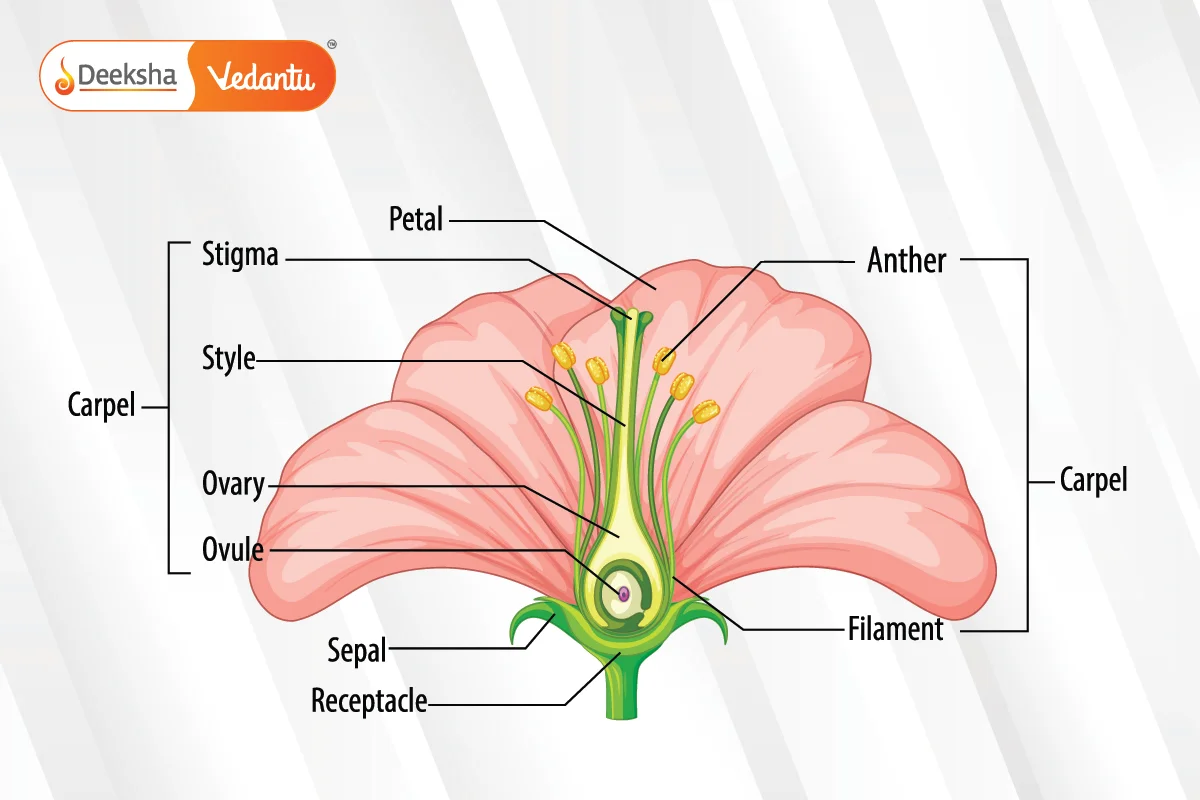
- Stamen (Male Reproductive Part):
- Anther: Produces pollen grains that contain male gametes.
- Filament: Supports the anther.
- Pistil (Female Reproductive Part):
- Stigma: Receives pollen grains.
- Style: A tube that connects the stigma to the ovary.
- Ovary: Contains ovules, which house the female gamete (egg).
Pollination:
Pollination is the transfer of pollen grains from the anther to the stigma of a flower. Pollination can occur in two ways:
- Self-pollination: Pollen from the anther is transferred to the stigma of the same flower or a different flower on the same plant.
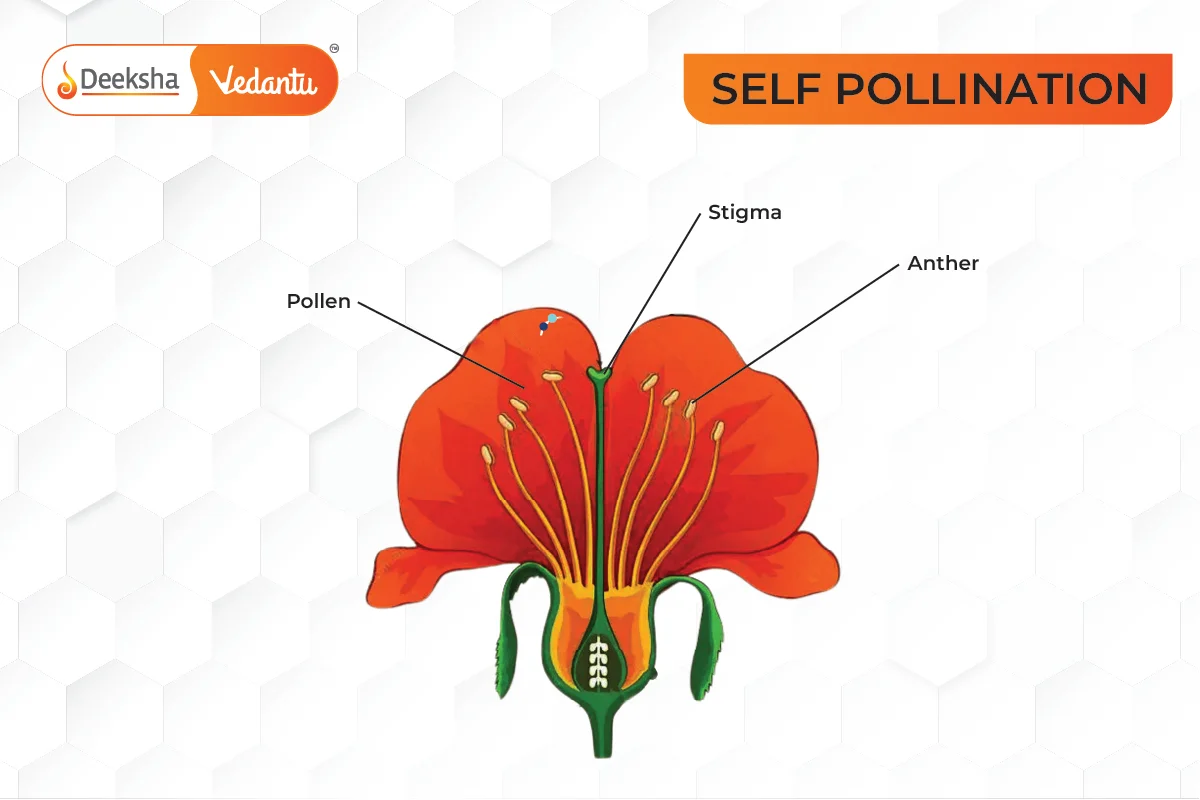
- Cross-pollination: Pollen is transferred from the anther of one plant to the stigma of a flower on another plant of the same species. This type of pollination leads to greater genetic diversity.
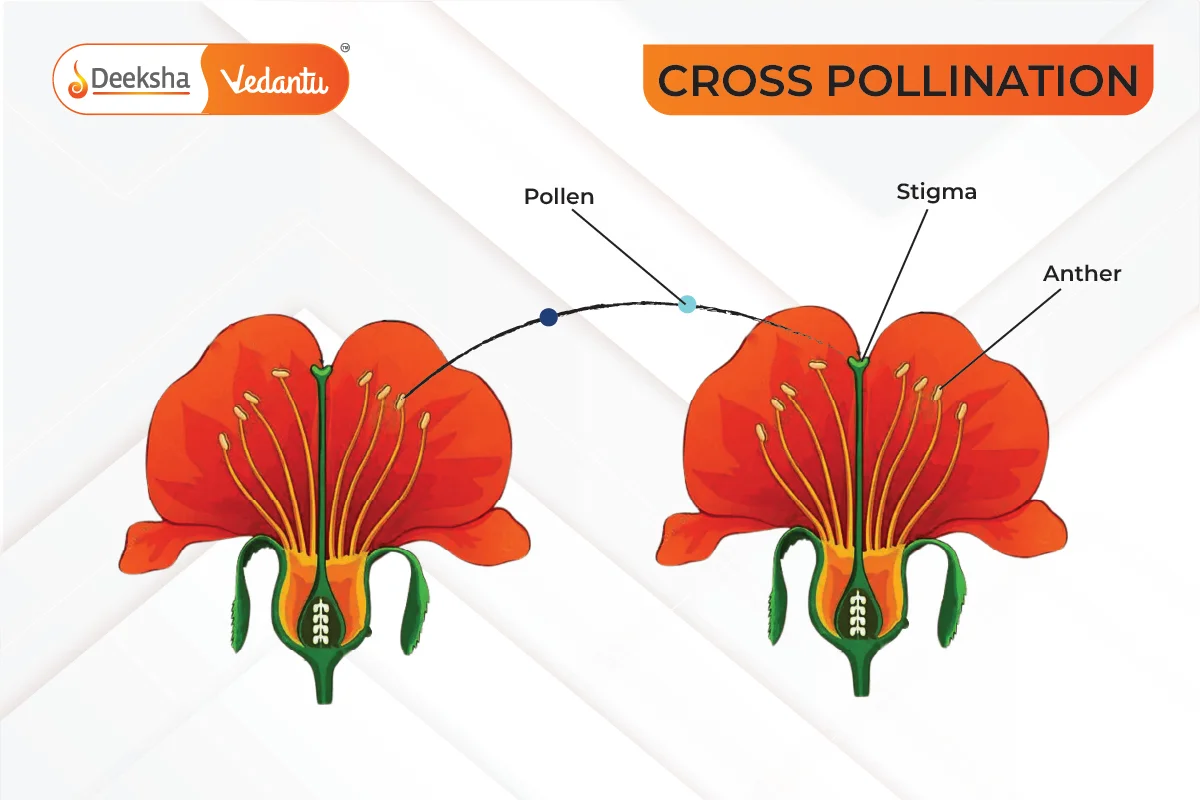
Fertilization in Plants:
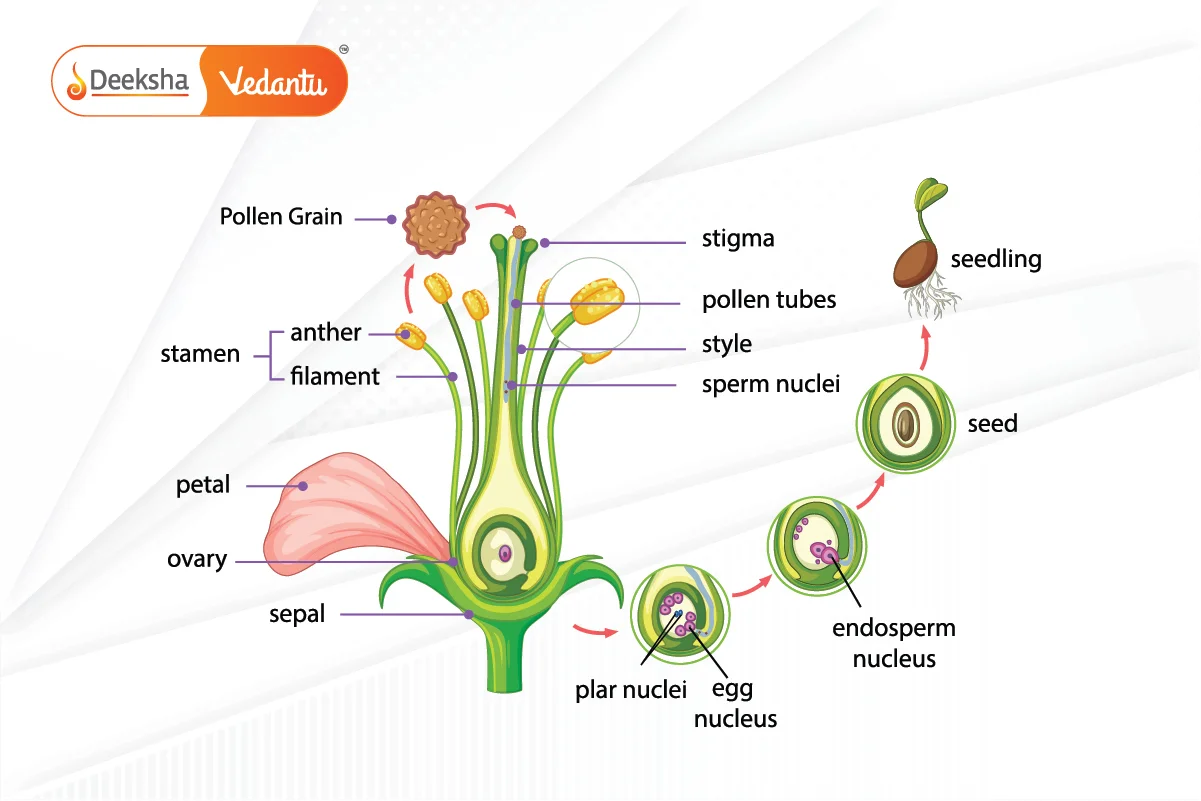
- Pollen Germination: After pollination, the pollen grain germinates on the stigma, and a pollen tube grows down through the style toward the ovary.
- Fusion of Gametes: The male gamete travels down the pollen tube and fuses with the female gamete in the ovule, resulting in fertilization.
- Formation of Zygote: The fusion of gametes forms a zygote, which eventually develops into a seed. The ovary matures into a fruit, and the ovules develop into seeds, which grow into new plants.
Sexual Reproduction in Animals
In animals, sexual reproduction involves the production of sperm cells (male gametes) by males and egg cells (female gametes) by females. These gametes are produced in specialized organs through a process called meiosis, which reduces the chromosome number by half.
Male Reproductive System:

- Testes: The primary male reproductive organs that produce sperm and the hormone testosterone.
- Vas Deferens: The duct that carries sperm from the testes to the urethra.
- Penis: The organ responsible for transferring sperm into the female reproductive tract during sexual intercourse.
Female Reproductive System:
- Ovaries: The primary female reproductive organs that produce egg cells and the hormones estrogen and progesterone.
- Fallopian Tubes (Oviducts): Transport the egg from the ovaries to the uterus. Fertilization typically occurs here.
- Uterus: The site where the fertilized egg implants and develops into a fetus.
- Vagina: The birth canal and the site where sperm are deposited during sexual intercourse.
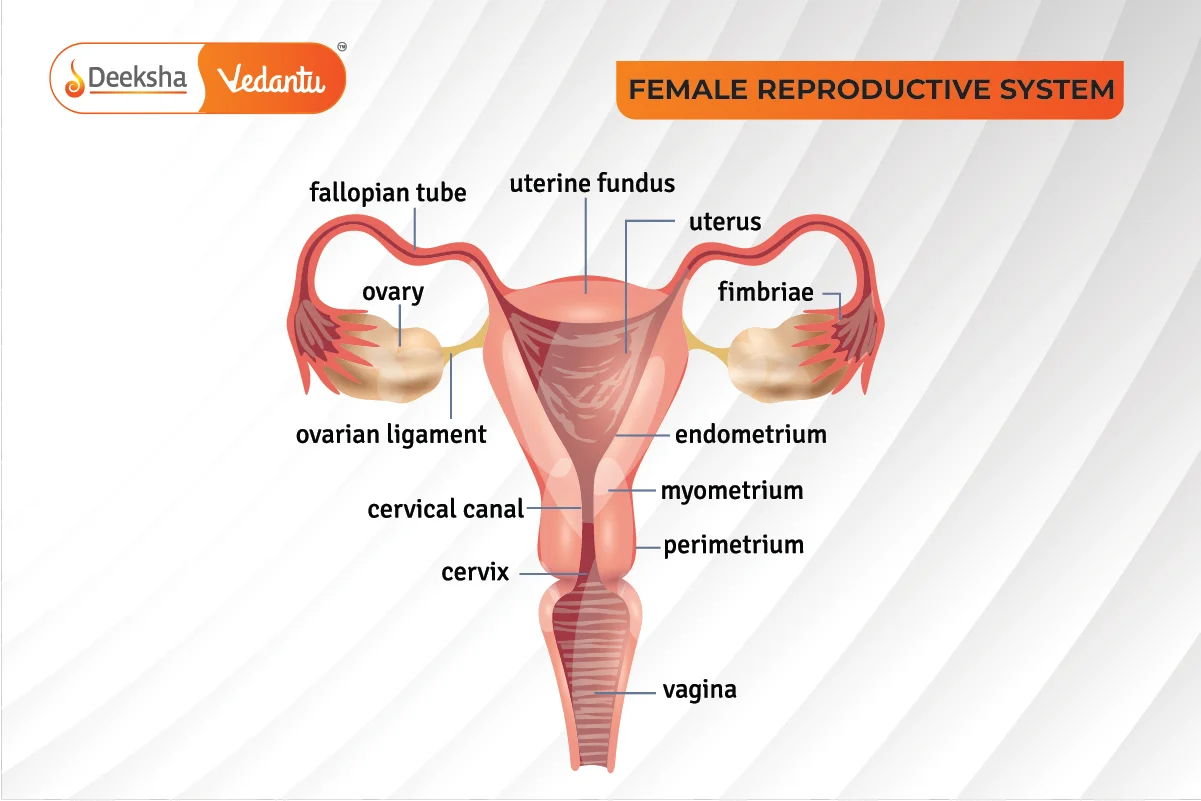
Fertilization in Animals:
- Sperm Deposition: During sexual intercourse, sperm are deposited in the female’s reproductive tract.
- Fertilization: A sperm cell fuses with an egg cell in the fallopian tube, forming a zygote.
- Zygote Development: The zygote undergoes multiple cell divisions to form an embryo. The embryo implants in the uterus and continues to develop into a fetus.
Genetic Variation and Meiosis
One of the key advantages of sexual reproduction is the introduction of genetic variation. The process of meiosis ensures that each gamete produced during sexual reproduction is genetically unique. Meiosis involves two rounds of cell division that reduce the chromosome number by half and shuffle the genetic material through crossing over and independent assortment of chromosomes.
Meiosis and Its Role in Sexual Reproduction:
- During meiosis, homologous chromosomes (chromosomes that contain the same genes but may have different versions, or alleles, of those genes) pair up and exchange genetic material in a process known as crossing over.
- The way chromosomes are distributed into gametes is random, a process called independent assortment, which further contributes to genetic diversity.
Fertilization and Variation:
After meiosis, the fusion of two genetically different gametes (one from each parent) results in a zygote with a unique combination of genes. This process introduces variation within a population, which is essential for evolution and adaptation to environmental changes.
Evolutionary Significance of Sexual Reproduction
Sexual reproduction plays a crucial role in the process of evolution. The genetic variation introduced through sexual reproduction provides the raw material for natural selection to act upon. Over generations, individuals with advantageous traits are more likely to survive and reproduce, passing those traits on to their offspring.
Example:
- In populations of animals, traits that improve survival, such as better camouflage or increased speed, are more likely to be passed on to future generations. Over time, these traits become more common, leading to the evolution of the species.
Practice Questions
Q1: Explain the process of fertilization in flowering plants.
- Answer: Fertilization in flowering plants occurs when the male gamete from the pollen grain travels down the pollen tube and fuses with the female gamete in the ovule. This fusion forms a zygote, which develops into a seed.
Q2: Describe the role of meiosis in sexual reproduction.
- Answer: Meiosis reduces the chromosome number by half, ensuring that gametes have only one set of chromosomes. It also introduces genetic variation through processes like crossing over and independent assortment, which contribute to the genetic diversity of offspring.
Q3: How does sexual reproduction lead to variation in a population?
- Answer: Sexual reproduction involves the mixing of genetic material from two parents. During meiosis, genetic material is shuffled, and during fertilization, gametes from two different individuals combine, resulting in offspring with unique genetic combinations.
FAQs
Pollination is the process of transferring pollen from the male reproductive part of the flower (anther) to the female reproductive part (stigma). It is necessary for fertilization and the formation of seeds in flowering plants.
Genetic variation increases the ability of a population to adapt to changing environments. It ensures that some individuals have traits that may be beneficial for survival in new or challenging conditions.
Meiosis is the process that produces gametes with half the number of chromosomes. It introduces genetic variation through crossing over and independent assortment of chromosomes.
Sexual reproduction involves the fusion of gametes from two parents, leading to genetic variation. Asexual reproduction involves only one parent and produces genetically identical offspring.












Get Social